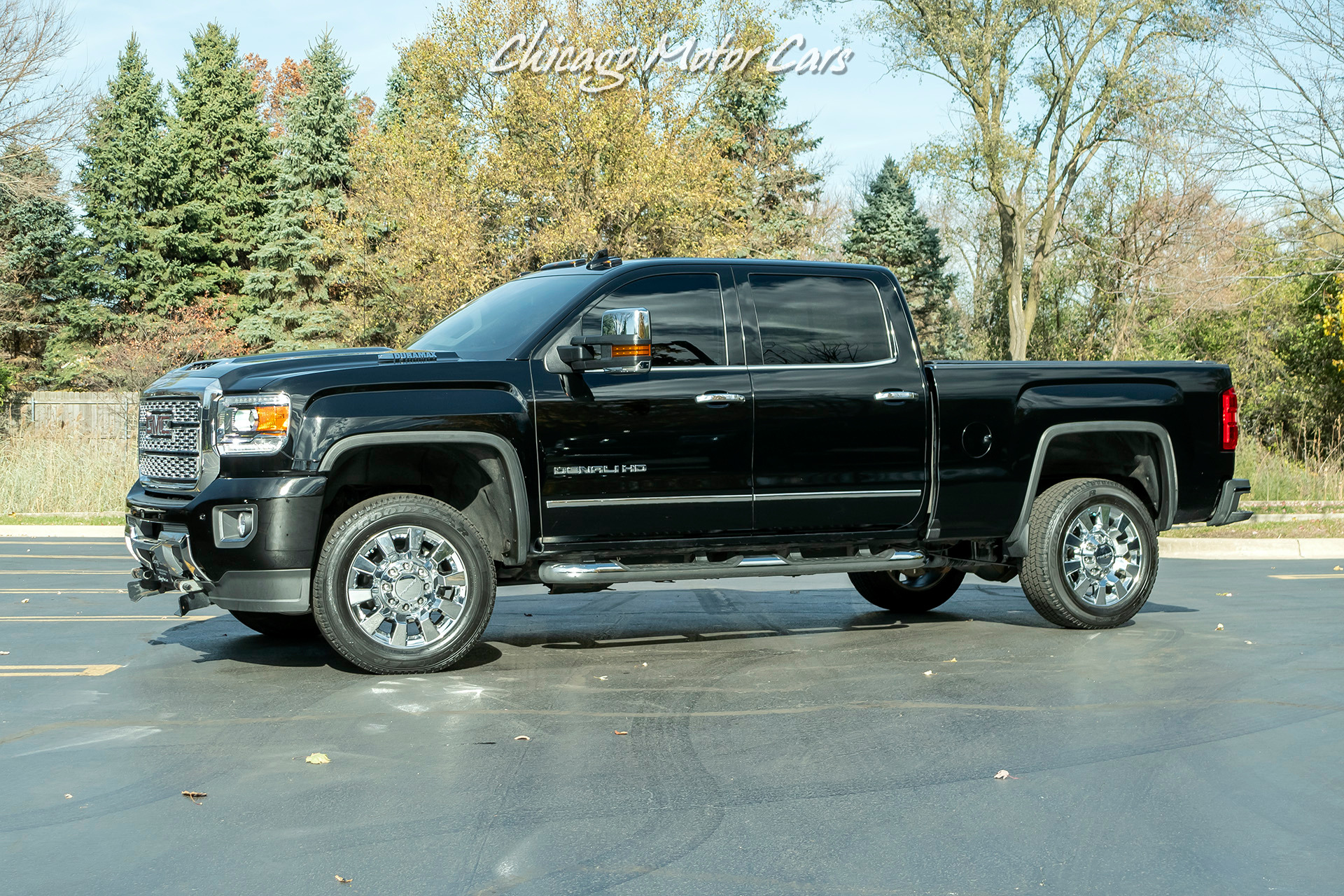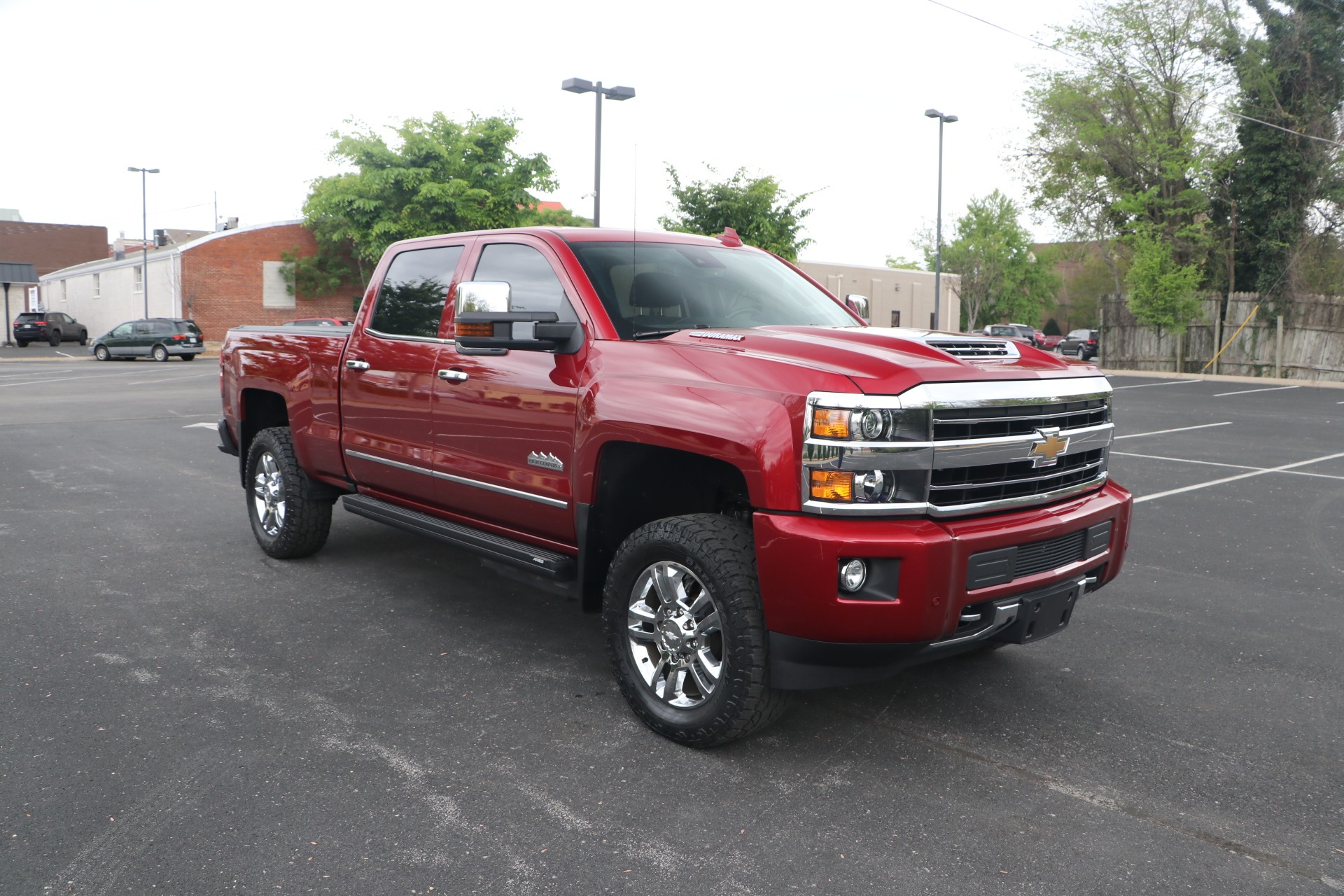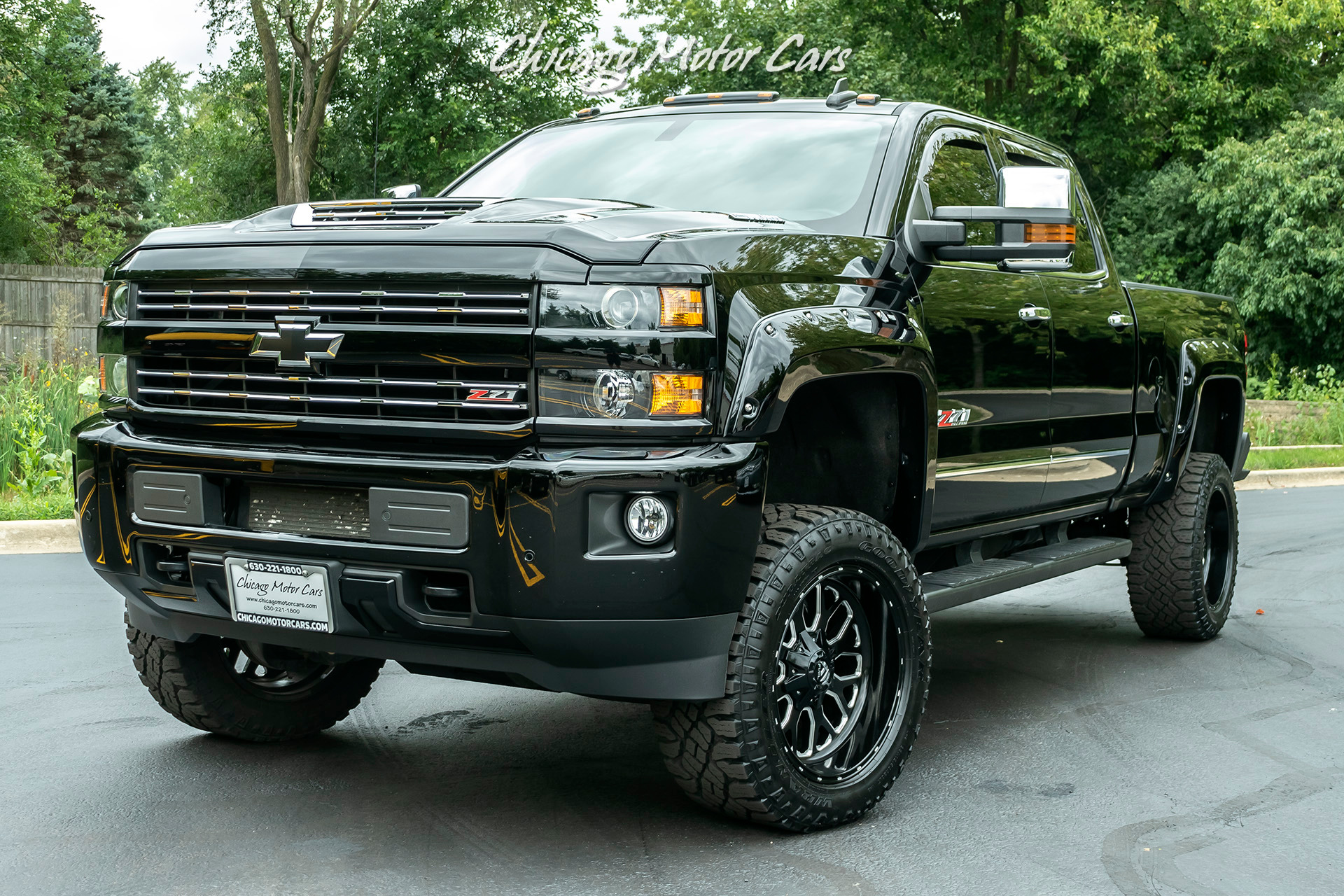Used GMC 2500 Duramax Diesel Trucks For Sale: Your Ultimate Buyer’s Guide cars.truckstrend.com
In the world of heavy-duty trucks, few names command as much respect and admiration as the GMC Sierra 2500, especially when equipped with the legendary Duramax diesel engine. These trucks are not merely vehicles; they are workhorses, towing giants, and reliable partners for anyone needing serious capability. For many, the high price tag of a brand-new model makes a used GMC 2500 Duramax an incredibly appealing proposition. Buying a used diesel truck, however, requires careful consideration and an informed approach. This comprehensive guide will equip you with the knowledge needed to navigate the market for used GMC 2500 Duramax diesel trucks, ensuring you make a smart and satisfying purchase.
Why Choose a Used GMC 2500 Duramax Diesel? Unmatched Power and Durability
Used GMC 2500 Duramax Diesel Trucks For Sale: Your Ultimate Buyer’s Guide
The decision to opt for a used GMC 2500 Duramax is often driven by a need for serious power, durability, and a lower entry price point compared to new. Here’s why these trucks stand out:
- Legendary Power and Torque: At the heart of the GMC 2500 HD lies the Duramax V8 diesel engine, paired with the robust Allison automatic transmission. This powertrain combination is renowned for its immense torque, enabling effortless towing of heavy trailers, RVs, boats, and large equipment. Whether it’s the early LB7 or the modern L5P, each iteration of the Duramax has delivered class-leading power figures.
- Exceptional Towing and Hauling Capacity: The 2500 series is designed for heavy-duty applications. With a Duramax engine, these trucks boast impressive conventional and fifth-wheel/gooseneck towing capacities, often exceeding 15,000 to 20,000 pounds, depending on the year and configuration. Their robust chassis, heavy-duty suspension, and powerful brakes make them ideal for commercial use, agricultural work, or serious recreational towing.
- Durability and Longevity: Duramax engines are built to last. With proper maintenance, it’s not uncommon to see these trucks exceed 300,000 or even 500,000 miles. Their cast-iron blocks, robust internals, and sophisticated fuel systems contribute to their incredible longevity, making a high-mileage example less daunting than with gasoline counterparts.
- Fuel Efficiency (for its class): While no heavy-duty truck is a fuel-sipper, diesel engines are inherently more fuel-efficient than comparable gasoline engines, especially under load. This can translate to significant savings on long hauls or during frequent towing operations.
- Strong Resale Value: Due to their reputation for reliability and capability, used Duramax trucks hold their value exceptionally well. This means your investment is likely to retain a good portion of its worth, should you decide to sell it down the line.

Understanding the Generations: Duramax Engine Codes and Key Differences
The Duramax engine has evolved significantly since its introduction in 2001. Knowing the different generations can help you identify potential issues or strengths of specific model years.
- LB7 (2001-2004.5): The original Duramax. Known for its power, but early models can suffer from injector issues that are costly to repair.
- LLY (2004.5-2006): Addressed some LB7 issues, but can be prone to overheating under heavy loads and turbocharger issues.
- LBZ (2006-2007): Often considered one of the most reliable and sought-after Duramax engines. It combined power with durability and lacked some of the emissions equipment of later models.
- LMM (2007.5-2010): Introduced the Diesel Particulate Filter (DPF) for emissions compliance. While powerful, the DPF can lead to regeneration cycles and potential maintenance issues.
- LML (2011-2016): Saw the introduction of Diesel Exhaust Fluid (DEF) in addition to the DPF. These trucks are powerful but have more complex emissions systems that require regular maintenance and can be costly to repair if issues arise.
- L5P (2017-Present): The current generation, significantly redesigned for increased power and efficiency. While still having DPF/DEF, the systems are generally more refined. These are the most powerful Duramax engines to date.


What to Look For When Buying a Used Duramax: A Thorough Inspection Checklist
Buying a used diesel truck is an investment, and a meticulous inspection is paramount. Don’t skip these crucial steps:
- Pre-Purchase Inspection (PPI) by a Diesel Mechanic: This is non-negotiable. Have the truck inspected by an independent mechanic specializing in diesel engines. They can identify common issues, check for codes, and assess the overall health of the powertrain.
- Engine and Drivetrain:
- Cold Start: Listen for any unusual noises (knocks, rattles, excessive smoke) upon cold start. Blue smoke can indicate oil burning; white smoke (after warm-up) can suggest coolant issues.
- Fluid Leaks: Check under the truck for oil, coolant, transmission fluid, or differential fluid leaks. Pay attention to the turbocharger for oil leaks.
- Exhaust System: Inspect the DPF (Diesel Particulate Filter) and DEF (Diesel Exhaust Fluid) system (if applicable). Look for any signs of tampering or "deletion" (removal of emissions equipment). Be aware that "deleted" trucks are illegal for road use in most states and may not pass emissions inspections.
- 4WD Engagement: Test both 4-High and 4-Low to ensure smooth engagement and disengagement.
- Maintenance Records: Crucial for diesel engines. Look for evidence of regular oil changes (with proper diesel-specific oil), fuel filter replacements, coolant flushes, and transmission services.
- Transmission (Allison):
- Smooth Shifting: Test drive the truck and ensure the Allison transmission shifts smoothly through all gears, both up and down, without slipping, hesitation, or harsh jerks.
- Fluid Check: Check the transmission fluid level and color. It should be red/pink and not smell burnt.
- Suspension and Steering:
- Worn Components: Check for worn ball joints, tie rods, control arm bushings, and shock absorbers. These are heavy trucks, and suspension components wear out.
- Steering Play: Excessive play in the steering wheel can indicate worn steering components (e.g., idler arm, pitman arm).
- Brakes: Check the condition of brake pads, rotors, and calipers. Ensure the pedal feels firm and the truck stops straight.
- Body and Frame:
- Rust: Inspect the frame, cab corners, rocker panels, wheel wells, and bed for rust, especially if the truck is from a rust-prone region. Surface rust on the frame is common; excessive rot is a red flag.
- Accident Damage: Look for inconsistencies in body panel gaps, mismatched paint, or signs of frame repair, indicating a past accident.
- Interior and Electronics: Test all lights, power windows, locks, HVAC, infotainment system, and any other electronic features.
- Mileage vs. Condition: Don’t be afraid of higher mileage on a Duramax if it has a documented maintenance history. A well-maintained 200,000-mile truck can be a better buy than a poorly maintained 100,000-mile one.
Where to Find Your Next Used GMC 2500 Duramax
- Franchise Dealerships (GMC/Chevrolet): Often have certified pre-owned (CPO) options, offering warranties and rigorous inspections, but usually at a higher price.
- Independent Used Car Dealerships: Wider selection and potentially better prices, but quality varies. Research the dealer’s reputation.
- Online Marketplaces: AutoTrader, CarGurus, eBay Motors, Craigslist, and Facebook Marketplace offer vast selections from both dealers and private sellers. Be cautious of scams.
- Private Sellers: Can offer the best deals as there’s no dealer markup. However, the buying process requires more due diligence from your end.
- Auctions: Can yield significant savings but are generally recommended for experienced buyers who can quickly assess a vehicle’s condition without a test drive or thorough inspection.
The Buying Process: A Step-by-Step Guide
- Define Your Needs and Budget: What will you use the truck for? What’s your maximum budget, including potential repairs or upgrades?
- Research Models and Generations: Based on your budget and desired features, narrow down the specific model years or engine generations that appeal to you.
- Search and Filter Listings: Use online platforms to filter by make, model, year, mileage, price, and location.
- Initial Contact and Questions: Call or email sellers with specific questions about maintenance history, any known issues, and reason for selling.
- Test Drive:
- Drive on various roads (city, highway, inclines) to test acceleration, braking, and handling.
- Listen for unusual noises.
- Check all gauges and dashboard lights.
- Test all functions (A/C, radio, cruise control, etc.).
- Pre-Purchase Inspection (PPI): Arrange for this immediately if the test drive goes well.
- Negotiation: Armed with the PPI report, negotiate the price. Be prepared to walk away if the deal isn’t right.
- Paperwork and Financing: Ensure all titles are clear, and sales agreements are properly executed. Secure financing if needed.
Potential Challenges and Solutions
- High Mileage: Solution: Focus on a comprehensive maintenance history. A well-maintained high-mileage Duramax is often a better bet than a low-mileage neglected one.
- Emissions System Issues (DPF/DEF): Challenge: These systems can be costly to repair or replace. Solution: Ensure the PPI includes a thorough check of the emissions system. Be aware of the maintenance requirements (DEF refills, DPF regeneration). Avoid "deleted" trucks for street use.
- Injector Issues (LB7): Challenge: Common and expensive. Solution: Factor this potential repair into your budget or opt for a later generation. Some LB7s may have already had the injectors replaced.
- Rust: Challenge: Especially prevalent in colder climates. Solution: Thoroughly inspect the frame and body. Surface rust is manageable, but structural rust is a deal-breaker.
- Finding a Well-Maintained Example: Challenge: Many Duramax trucks are work trucks and may have been abused. Solution: Patience, persistence, and a willingness to travel for the right truck. The PPI is your best defense.
Maintaining Your Used Duramax: Protecting Your Investment
Once you own a used Duramax, proper maintenance is key to its longevity:
- Regular Oil Changes: Use only diesel-specific engine oil at recommended intervals (often 5,000-7,500 miles, depending on usage).
- Fuel Filter Replacement: Crucial for diesel engines to protect the sensitive fuel system. Follow manufacturer recommendations (often every 10,000-20,000 miles).
- Coolant Flushes: Maintain the cooling system to prevent overheating and ensure proper engine temperature.
- Transmission Service: Regular fluid and filter changes for the Allison transmission are vital for its longevity.
- Differential Fluid Changes: Don’t forget the front and rear differential fluids.
- Air Filter Inspection: Keep the engine breathing cleanly.
- DEF Fluid (LML, L5P): Ensure you use the correct DEF fluid and keep the tank topped off.
- Monitoring Dashboard Lights: Address any check engine or emissions-related lights immediately.
Estimated Price Table for Used GMC 2500 Duramax Diesel Trucks
Prices for used GMC 2500 Duramax trucks can vary significantly based on model year, mileage, condition, trim level, modifications, and regional market demand. The table below provides general estimated ranges.
| Model Year Range | Duramax Engine Code | Condition (General) | Estimated Price Range (USD) | Key Considerations / Common Issues |
|---|---|---|---|---|
| 2001-2004.5 | LB7 | Fair to Good | $8,000 – $15,000 | Oldest models, likely high mileage. Common for injector issues. Potential for significant rust. Best for budget buyers or those willing to invest in repairs. |
| 2004.5-2006 | LLY | Fair to Good | $10,000 – $18,000 | Mid-life engines. Can have turbocharger issues and propensity for overheating under heavy loads. Still prone to rust depending on origin. |
| 2006-2007 | LBZ | Good to Excellent | $15,000 – $25,000 | Highly sought after due to strong reliability and no DPF. Excellent value. Prices hold strong. |
| 2007.5-2010 | LMM | Good to Excellent | $18,000 – $30,000 | First generation with DPF. Strong engine, but DPF can be a maintenance point. Good balance of power and features. |
| 2011-2016 | LML | Good to Excellent | $25,000 – $45,000 | Introduced DEF. More complex emissions system. Powerful and modern interiors. Higher purchase price reflects newer tech and lower mileage. |
| 2017-2019 | L5P | Very Good to Excellent | $35,000 – $60,000+ | Significant power boost, refined emissions. Still relatively new, higher initial cost. More advanced features and technology. |
| 2020-Present | L5P | Excellent | $50,000 – $80,000+ | Latest generation, often with remaining factory warranty. Highest prices due to age and features. |
Disclaimer: These prices are estimates only and can fluctuate wildly based on specific vehicle condition, mileage, trim level (e.g., SLT, Denali), 2WD/4WD, specific options, and the current market demand in your region. Always conduct thorough research and obtain a pre-purchase inspection.
Frequently Asked Questions (FAQ)
Q: Is a high-mileage Duramax still a good buy?
A: Yes, absolutely, if it has a comprehensive and verifiable maintenance history. Diesel engines are built for longevity, and 200,000+ miles is not uncommon. Prioritize maintenance records over raw mileage numbers.
Q: What’s the best year for a used Duramax?
A: Many enthusiasts consider the LBZ (2006-2007) to be the "sweet spot" due to its excellent reliability, strong performance, and lack of complex emissions systems like the DPF and DEF. However, later LML and L5P models offer more power, modern features, and improved emissions control if you’re willing to manage the associated maintenance.
Q: Should I buy a "deleted" Duramax?
A: Generally, no, for road-going vehicles. "Deleted" trucks have had their emissions control systems (DPF, DEF, EGR) removed or bypassed. While this might offer performance gains and fewer maintenance issues, it is illegal for road use in most jurisdictions, will not pass emissions inspections, and can void insurance or lead to significant fines. They are typically only for off-road or competition use.
Q: What are the common maintenance costs for a Duramax?
A: Beyond standard truck maintenance, Duramax-specific costs include more frequent and expensive oil changes (due to larger oil capacity and specific diesel oil), fuel filter replacements, and potentially DPF/DEF system maintenance (for LMM, LML, L5P). Injector issues (LB7) and turbo/overheating issues (LLY) can be costly if not addressed.
Q: How much can a GMC 2500 Duramax tow?
A: Towing capacity varies by year, configuration (2WD/4WD, cab/bed length), and specific setup. Generally, modern GMC 2500 Duramax trucks can conventionally tow between 14,500 to 18,500 pounds and handle fifth-wheel/gooseneck loads from 16,000 to over 20,000 pounds. Always check the specific truck’s Gross Combined Weight Rating (GCWR) and Gross Vehicle Weight Rating (GVWR) on its doorjamb sticker.
Q: What’s the difference between a GMC Sierra 2500 and a Chevrolet Silverado 2500?
A: Mechanically, they are nearly identical, sharing the same Duramax engine, Allison transmission, and chassis components. The primary differences are cosmetic (grille, headlights, taillights, interior trim) and branding. GMC generally positions itself as a more premium offering, often with slightly higher trim levels (like Denali) and a more refined aesthetic, while Chevrolet emphasizes ruggedness and utility.
Conclusion: Your Powerful Partner Awaits
A used GMC 2500 Duramax diesel truck represents a fantastic opportunity to own a powerful, reliable, and capable vehicle without the steep price tag of a new one. By understanding the different generations, knowing what to meticulously inspect, and following a structured buying process, you can confidently navigate the market. With proper care and maintenance, your used Duramax will serve as a loyal and powerful partner for years to come, ready to tackle any job or adventure you throw its way. Happy hunting!

